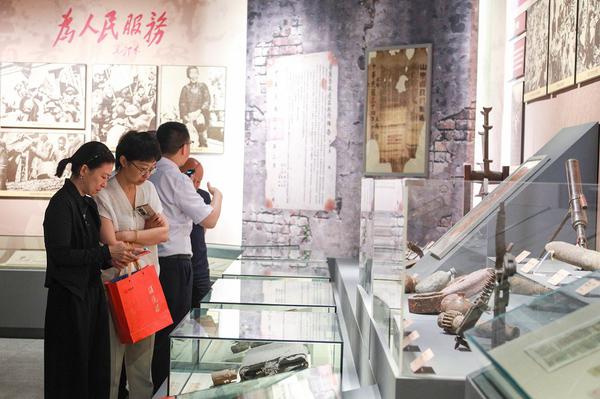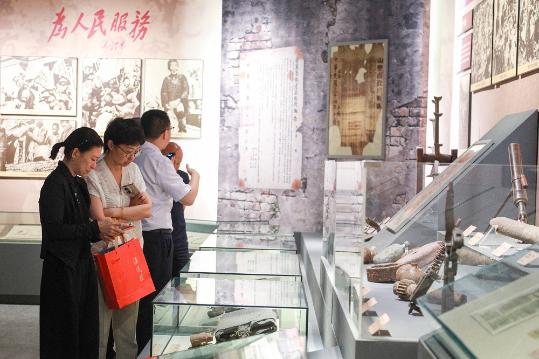Four provinces unite for war anniversary museum exhibits

An exhibit at the Shanxi Museum to mark the 80th anniversary of the victory in the Chinese People's War of Resistance Against Japanese Aggression (1931-45) and the World Anti-Fascist War. (Photo provided to chinadaily.com.cn)
To mark the 80th anniversary of the victory in the Chinese People's War of Resistance Against Japanese Aggression (1931-45) and the World Anti-Fascist War, an exhibit displaying cultural relics from war base areas in Shanxi, Hebei, Shandong, and Henan provinces opened simultaneously at the Shanxi Museum and Hebei Museum on July 1. The Shandong Museum and Henan Museum will follow suit with exhibits in the coming weeks.
The Shanxi exhibit features over 610 items, including more than 360 revolutionary relics from the province, most of which are being displayed for the first time.
These artifacts include precious historical images depicting guerrilla warfare and landmine battles, illustrating the creation, growth, and eventual victory of the four provinces' bases.
Organized by the Shanxi Provincial Cultural Relics Bureau in collaboration with its counterparts in Hebei, Shandong, and Henan, the exhibit is a retrospective of the arduous history of the war and a passionate tribute to the brave struggle of the people. The exhibit will run until October.
Zhao Zhiming, deputy director of the Shanxi Museum, described the meticulous planning and selection of the revolutionary relics from the four provinces over the past two years. Each relic tells a story, serving as a witness to history and a microcosm of the resistance.
Moreover, the exhibit presents a diverse array of cultural activities on the bases, such as theatrical performances and songs, highlighting the role of culture in the resistance.
Entering the exhibit, visitors can tangibly experience the joy of victory from 80 years ago. A wall in the exhibition hall prominently displays the achievements of the Shanxi-Hebei-Shandong-Henan wartime bases, including the liberation of 105 county towns, the emancipation of 24 million people, and the recovery of 180,000 square kilometers of territory.

